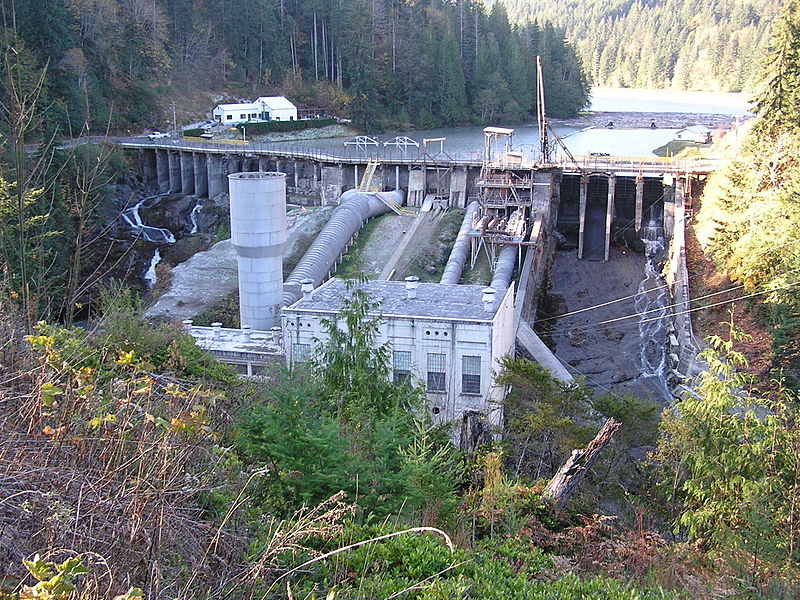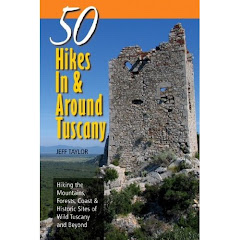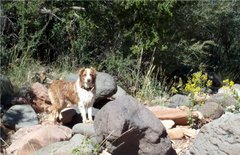Distance: 4.1 miles
Elevation: 6000 feet
Difficulty: Easy
Time of Year: Anytime, but watch for intense heat in summer
Do you want to go visit the Island in the Sky at Canyonlands National Park, but have a dog with you? Then Dead Horse Point State Park is the place to go. Located on the same 6000 foot plateau as the Island in the Sky, Dead Horse Point offers spectacular views of the La Sal Mountains, Colorado River Gorge, and the Island in the Sky across a great chasm. But, it's trails are open for dogs, so its the place many people go as an alternative to Canyonlands.
 |
| Approaching the West Rim with Island in the Sky across the chasm |
The loop trail starts from the visitor center. To get there, just head north of Moab on US-191 until you see signs for Canyonlands National Park and Dead Horse Point on UT-313. Follow it about 23 miles until you see the turnoff to the left. Then follow this park road to the visitor center. Immediately at the visitor center, you can look east toward the La Sal Mountains, with the Potash Ponds quite visible near the banks of the Colorado River. These evaporation ponds are used to extract dissolved potassium salts from the river and nearby sediments for export as fertilizers (especially to China).
 |
| The view down from the West Rim |
While you can start the loop in either direction, I recommend you head toward the west rim first. That's because if you get a start in the morning, the angle of the sun is better for illuminating the cliffs and the Island in the Sky in the morning light. After about 1/2 mile, you arrive at the West Rim and then more-or-less follow it to the south until reaching The Neck. All along this stretch you will see dry and wet potholes. These shallow depressions that fill with rainwater are critical to the ecosystems. They are full of species (brine shrimp, triops, aquatic insects, tadpoles) who have to complete their entire lifecycle in a matter of weeks. They are also an important water source for animals who otherwise wouldn't have access to any.
 |
| Potholes are common in this area. |
The Neck is a very narrow isthmus connecting Dead Horse Point to the rest of the plateau. The story goes that Dead Horse Point got its name because some ranchers rounding up wild horses moved them out onto the point and then used logs and vegetation to create a fence across the narrow neck. After leaving for a while, when the ranchers returned, they found all of the horses had died of thirst, despite being in view of the Colorado River some 2000 feet below.
 |
| Looking down to the river, with the Potash Road on a bench above it. |
At the very edge of Dead Horse Point, there is a parking lot, restroom, and viewing area. You can look straight down to the river. You can also look across the vistas toward the Abajo Mountains to the south, the Needles District of Canyonlands National Park to the southwest, the Henry Mountains to the west in the distance, and the La Sal Mountains to the east.
 |
| View at Dead Horse Point |
From here, the trail now follows the east rim for 1.5 miles back to the visitor center. In the afternoon light, the views toward the east across toward Arches National Park is absolutely stunning. While this isn't a hike I would want to do in the blazing heat of summer, it is absolutely perfect to do in the cooler days of autumn and spring. You can even do it in winter if you wear adequate layers.














































